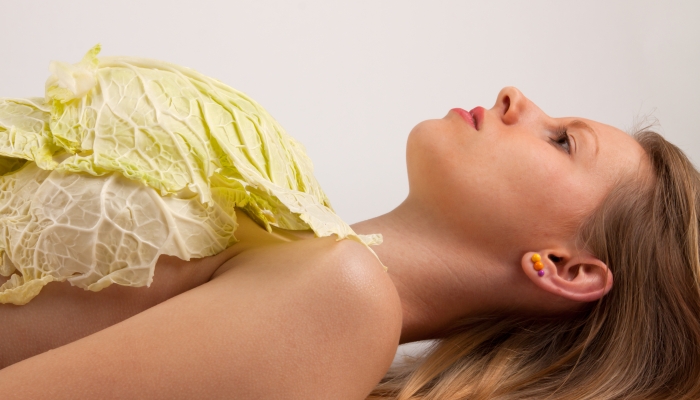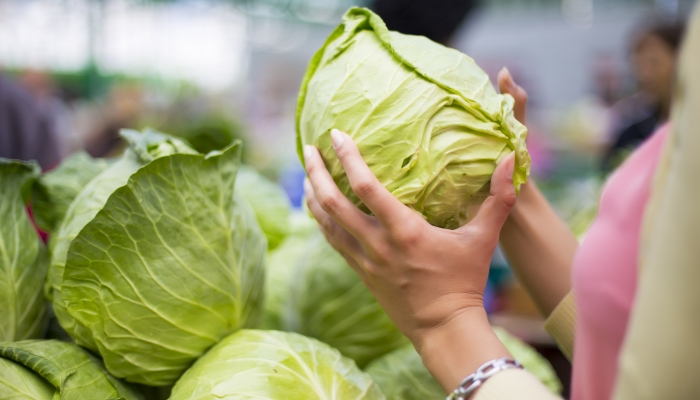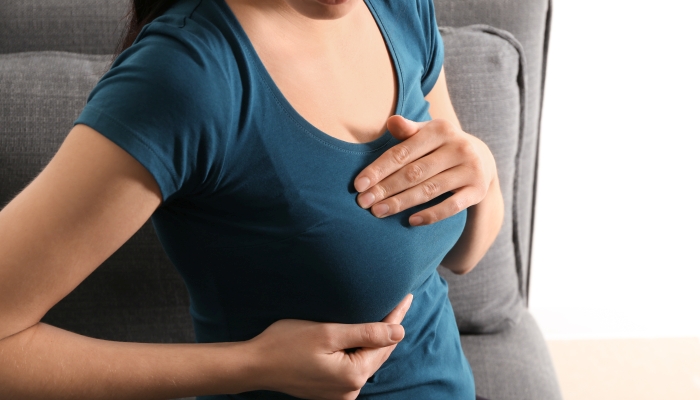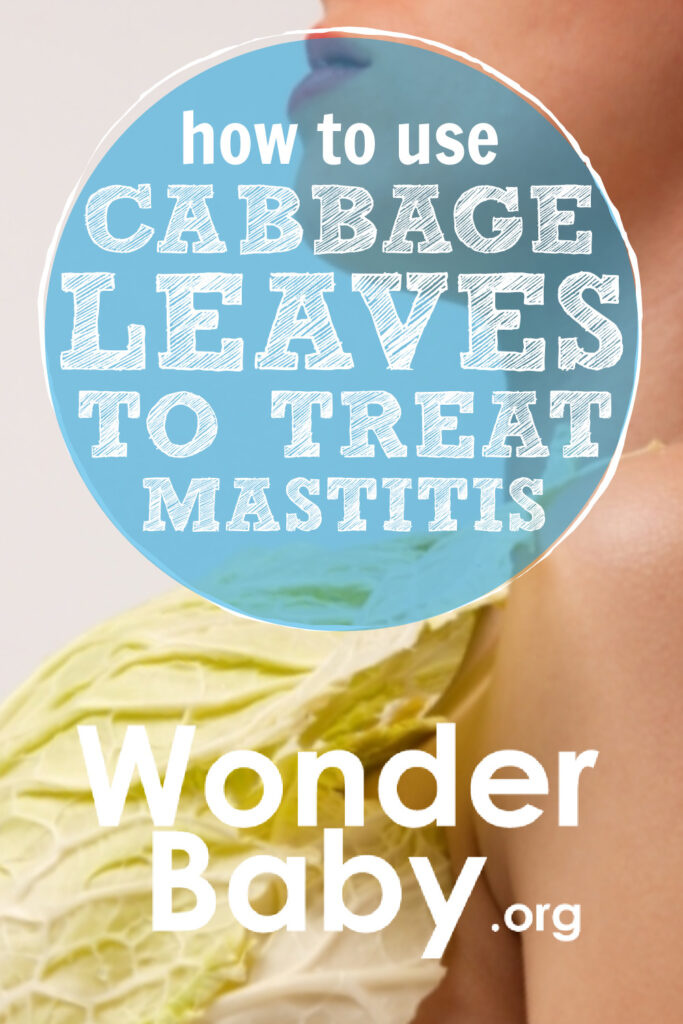How to Use Cabbage Leaves to Treat Mastitis

- Mastitis is an inflammation of the breast’s mammary gland, often due to an infection.
- Mastitis can be a severe condition, so physician consultation is always recommended.
- Cabbage leaves applied to the affected breast can help with the discomfort associated with mastitis.
- Antibiotics are the only way to treat a serious mastitis infection.
Whoever discovered the home remedy treatment of cabbage leaves for mastitis discomfort stumbled upon a brilliantly simple and effective solution to a common ailment for breastfeeding mothers.
With medical and pharmaceutical companies making a great profit on potions and creams for suffering moms, an inexpensive and helpful solution can be welcome advice for nursing moms everywhere.
What is Mastitis?
American Family Physician defines mastitis as inflammation of the breast. They estimate that this common breastfeeding problem affects about 10% of women who nurse. Mastitis causes breast pain and is the main reason that women stop nursing altogether.
Moms trying to wean their baby off the breast or those in the first few weeks of their breastfeeding journey are most susceptible to this issue.
Prompt treatment, continued breastfeeding, and relief measures can keep breastfeeding on track and reduce the breast engorgement that may lead to mastitis.
The primary symptom of mastitis is painful engorgement and swollen breasts, mainly on one side.
Other signs of mastitis can be:
- A sudden drop in your milk supply
- A red and hot breast
- Pain or burning feeling while nursing
- Fever and flu-like symptoms
- Discharge from nipple
- A breast lump
A clogged milk duct or cracked nipples where bacteria can enter has been attributed to the cause of mastitis. Whatever the reason, the discomfort associated with this condition will have you desperate for pain relief.
How Effective Are Cabbage Leaves for Mastitis?
Cabbage leaves can be very effective in treating mastitis. Peer-reviewed studies indicate that cabbage leaves are more effective than gel packs in treating breast engorgement and pain associated with mastitis.
A simple cabbage leaf applied to engorged breasts is so effective in the treatment of mastitis that my local obstetrician has a printed hand-out on this topic alone that they give to all nursing mothers. This treatment is so amazing that veterinarians also recommend it for nursing dogs and other animals.

How Do Cabbage Leaves Help in Treating Mastitis?
Although there are numerous studies showing the effectiveness of applying cabbage leaves to the skin of an engorged breast, there is a lack of research discussing exactly how cabbage leaves actually help in the treatment of mastitis.
Although no specific reason has been documented, some theorize that there are compounds in green cabbage leaves that, when applied directly to the skin, have anti-inflammatory properties that are transferred to the affected breast.
The experts do agree that the cabbage leaf serves as a cold compress thus decreasing inflammation of the breast due to the cool temperature.
How to Use Cabbage Leaves for Mastitis
There is some controversy over the most effective way to use cabbage leaves to treat mastitis and breast engorgement.
Should the Cabbage Leaf Be Hot, Cold, or Frozen?
In general, both hot and cold compresses have been found to help elevate painful spots on the body. This same theory applies to cabbage leaves for mastitis pain relief.
Should you apply hot or cold in this instance? Although some experts advise brief boiling of the leaf to make it more pliable to the shape of the breast, most recommend cooling the cabbage to refrigerated temperatures.
Some even instruct chilling the magical leaves in the freezer prior to applying them to the breast. Keep in mind that the direct application of a frozen material to the skin may risk frostbite. To be safe, chilling the cabbage in the refrigerator instead of a freezer may be your wiser option.
Additionally, many studies indicate that cabbage leaves can be used either at room temperature or chilled in the refrigerator. If you are team “cold therapy to help to reduce inflammation,” chilled cabbage may be your best bet.
Step-By-Step Cabbage Leaf Treatment for Mastitis
By applying cabbage to the skin of your breast with the following process, you should achieve relief from pain and engorgement almost immediately.
- Start with a fresh head of green cabbage, chilled or at room temperature.
- Peel off the outer layer of cabbage leaves and select two large leaves for your application.
- Wash selected leaves and pat dry.
- The leaf should be pliable and adhere to the shape of your breasts. You can boil the leaf first, remove the tough inner stem, or take a food mallet and crush the tough areas.
- Apply the chilled cabbage leaves directly to your breast. A loose fitting bra will help to hold the leaves in place.
- Wrap the leaf loosely around the breast, leaving the nipples exposed and the leaf touching the skin.

How Long Should You Apply Cabbage Leaves on the Breasts?
Most experts agree that the cabbage treatment should be applied to breast tissue for approximately 20 minutes at a time to help with painful engorgement. You should see a reduction in breast inflammation when applied to the affected breast three times a day.
However, caution is recommended, as overuse of the green cabbage application can result in a drop in your milk supply. This is why some breastfeeding women use cabbage leaves to help the weaning process.
When Not to Use Cabbage Leaves for Mastitis
Although cabbage leaf treatment has been recommended for years, there are some situations when you wouldn’t want to use this simple home remedy for breast engorgement and mastitis.
Obviously, if you are allergic to cabbage, you should not partake in this treatment. In addition, direct application to very dry, cracked, or broken skin is a no-no. Instead, consider the use of moisturizers and nipple creams with Lanolin to help heal the area.
Also, due to the milk-reducing nature of green cabbage, breastfeeding moms who are not trying to wean or have a low milk supply should use this treatment with caution. It’s best to stay in frequent touch with your lactation consultant regarding any breastfeeding issues, such as breast pain or engorgement.

When to See A Doctor for Mastitis
It’s critical that you contact your physician if you suspect that you have mastitis. This point can’t be stressed enough! If you aren’t sure, don’t hesitate to call your doctor’s office to ask questions. Breast engorgement, clogged milk ducts, and early mastitis can turn into a nasty infection that will make you miserable and interfere with breastfeeding in a big way.
Signs that your breast engorgement has become an infection are:
- Hard and painful lump in one breast.
- Very red area on the breast that is enlarging and hot.
- Flu-like symptoms with body aches, especially a fever over 101 degrees.
Breast engorgement that has turned into a mastitis infection won’t go away without an antibiotic. Chilled cabbage may help with painful engorgement associated with mastitis, but this remedy can not treat this serious infection.
More Tips to Help With Mastitis
It’s important to remember to apply these additional measures when dealing with painful engorgement and mastitis:
- Don’t stop pumping or breastfeeding if you have mastitis.
- Alternate breasts for each feeding.
- Encourage your little one to fully empty one breast before switching to the other side.
- Stay in touch with your breastfeeding consultant.
- Keep nipples and breast skin moisturized and free from cracked or broken skin.
- Take your antibiotics as directed and in their entirety. Stopping antibiotics before the course is finished may result in a rebound infection.
Mild breast engorgement can resolve on its own. However, many moms may not be able to tell if the swelling is severe or needs antibiotic treatment. That’s why it’s recommended that you always keep your breastfeeding consultant and doctor up to date on any concerns about your breasts and nursing. It’s vital to keep your milk flowing, so guidance from your breastfeeding experts is always advised.

The information WonderBaby provides is not intended to be, and does not constitute, medical or other health advice or diagnosis and should not be used as such. Always consult with a qualified medical professional about your specific circumstances.
Related Posts

Breastfeeding, Sleep
Sleep and Breastfeeding: A Comprehensive Guide for Nursing Moms
Many people assume breastfeeding and sleep training don’t go together, but it is possible to help your baby sleep better while continuing your breastfeeding journey.

Breastfeeding
Comfort Nursing: Pros, Cons, and How to Stop
Find out what comfort nursing is, when should you worry about it, and how to stop or limit your baby's comfort nursing (especially at night!).

Breastfeeding, Product Reviews
5 Best Breastfeeding Chairs for Nursing Moms of 2023
Whether you want a gentle rock, a smooth glide, or a cozy cuddle to soothe your baby to sleep, you’ll have your pick of the best breastfeeding chairs on the...